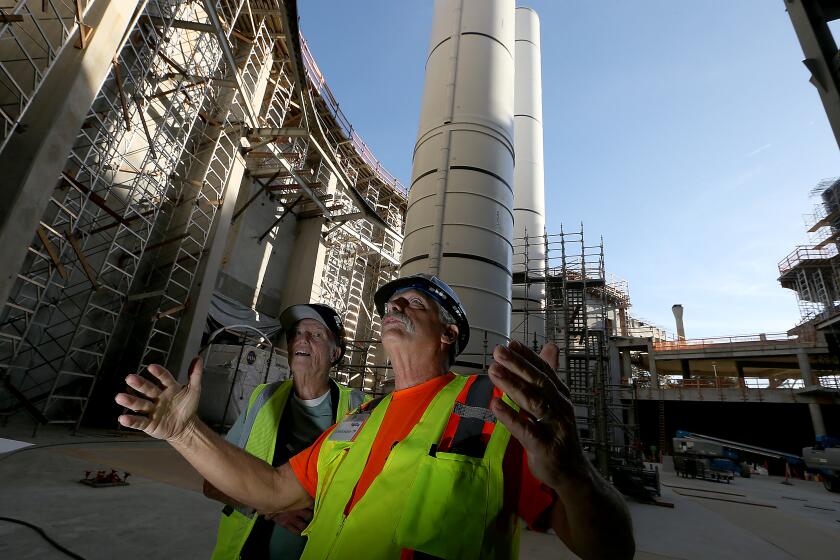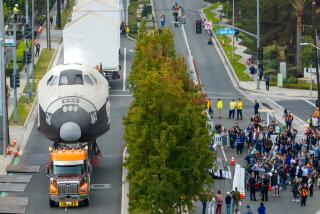Space shuttle Endeavour’s giant orange external tank begins final journey

- Share via
At long last, the final journey of the last space shuttle ever built, Endeavour, and its giant orange external tank are expected to begin this month — the capstone to a historic journey to an ambitious museum exhibit in Los Angeles.
It’ll be a momentous occasion for the California Science Center, the state-run museum just south of downtown L.A., which is building the 20-story Samuel Oschin Air and Space Center to house Endeavour. Anticipation has been building for more than a decade for the new museum wing, after NASA’s decision in 2011 to send Endeavour to L.A. and the orbiter’s cross-country journey in 2012, flying over the Hollywood sign before undertaking a three-day journey through city streets to its new home.
Unlike any other exhibit showcasing a retired space shuttle, Endeavour in L.A. will be configured in a full-stack arrangement, pointing to the stars, as if ready for launch.
Barring any weather delays, starting next week, the 65,000-pound, 154-foot-long giant orange external tank is expected to be moved and then lifted up from its current horizontal position into a vertical orientation, where it’ll be attached to the solid rocket boosters that have already been installed.
Then, no earlier than the end of the month, the space shuttle orbiter itself, Endeavour, will then be lifted from its horizontal position to its vertical position, and be attached to the external tank. It’ll be the first time a shuttle designed for space has been assembled vertically outside of a NASA or Air Force facility.
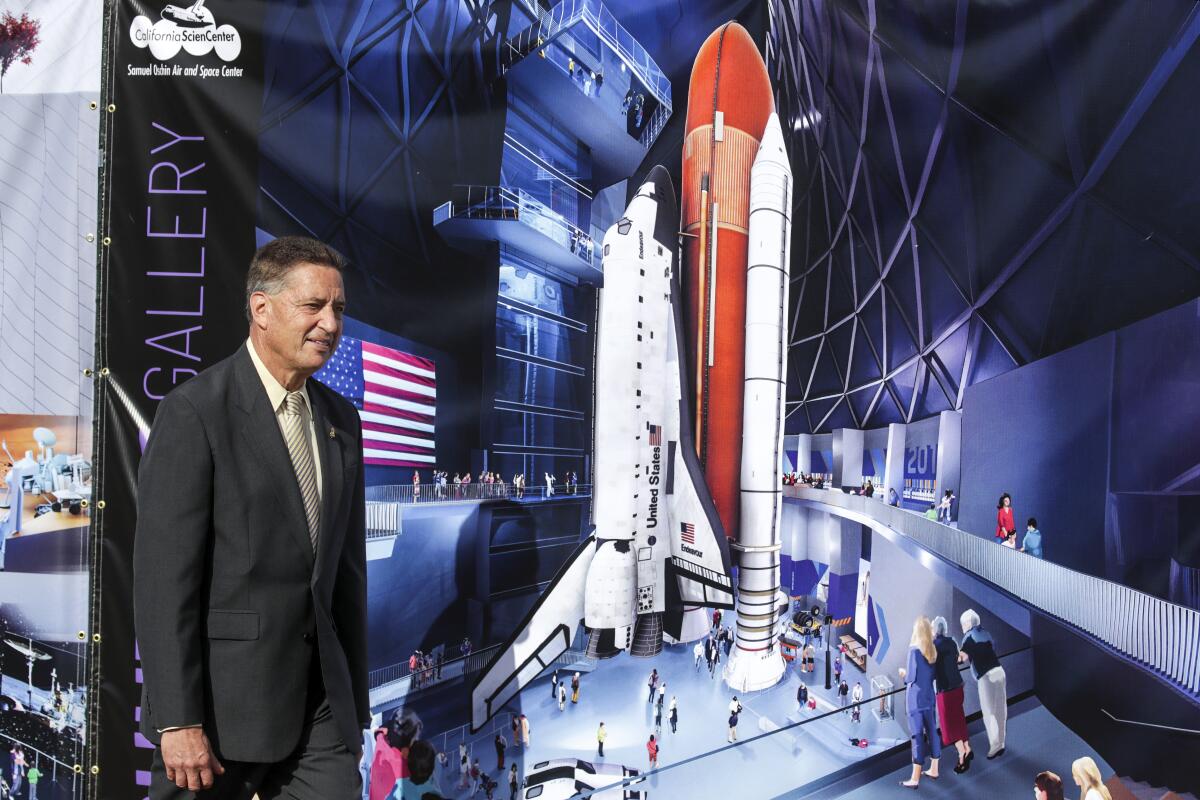
The operation will be a sight to see, and the key moments of the lift of the external tank and Endeavour will be streamed online by the California Science Center. The cranes that will lift the spacecraft are quite tall — the tallest of which will be about the height of City Hall.
“Show time!” said Jeffrey Rudolph, president of the California Science Center.
The prelude to the external tank’s big lift is scheduled for Jan. 10, when the it will be moved by self-propelled modular transporters — similar to the ones used to move Endeavour through city streets in 2012 — down State Drive to the new museum wing’s construction site. The journey will take about two hours, past the science center and the Exposition Park Rose Garden.
Then, on the evening of Jan. 11 and into the next morning, the external tank is to be lifted, starting sometime after 10 p.m. Because the move is taking place outdoors, any significant winds could lead to delays in the big move, and the museum doesn’t want a very big thing swinging off a crane in significant winds.
“The trend, at least in December, was for the winds to die down about 10 p.m. and pick back up about 4 a.m. Assuming that holds into early January, we’ll try taking advantage of that six-hour window to lift the tank and get it in to the pit,” said Dennis Jenkins, project director for the Samuel Oschin Air and Space Center.
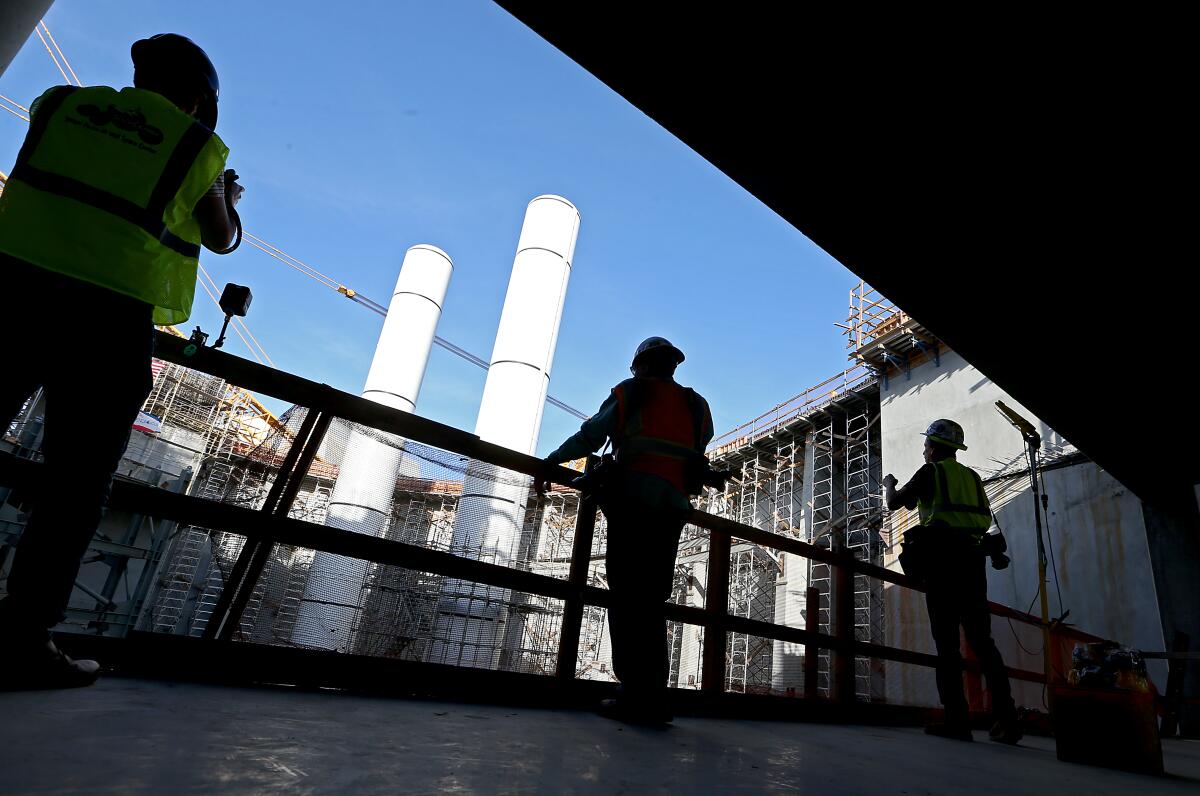
Two cranes will be used initially to lift up the external tank from its horizontal position. Then, the external tank will be slowly turned upright to a vertical orientation, and one of the cranes will be disconnected. The other crane will then lift the tank into its final position.
The external tank will then be attached to components that were installed in recent months — the twin solid rocket boosters, which began to be installed in a months-long process that started over the summer. At liftoff, the white rocket boosters were set underneath the shuttle’s wings and produced more than 80% of the lift.
Crews successfully lifted into place giant rockets at the California Science Center, the first large components installed at the future home of the space shuttle Endeavour.
The 15-story orange external tank, the last of its kind in existence, arrived in Los Angeles in 2016, on a journey by sea through the Panama Canal and into Marina del Rey, before also lumbering through the streets to the Science Center. During launches, the external tank carried propellants — liquid oxygen and liquid hydrogen — that powered the space shuttle’s three main engines to help bring the shuttle into orbit.
After the external tank is put into position, work will begin to move Endeavour out of its existing exhibit space, the temporary hangar known as the Samuel Oschin Space Shuttle Endeavour Pavilion, where the orbiter had been on display for about 11 years, until it closed on New Year’s Eve.
The hangar is being dismantled to make way for Endeavour’s move. Later this month, Endeavour will begin to be moved out of the hangar, on the western edge of the science center, Rudolph said.
It’ll first be rolled onto the lawn just north of the Los Angeles Memorial Coliseum and south of the Natural History Museum of Los Angeles County.
Then, the orbiter will move down State Drive. The move will be tricky: At one point, Endeavour will need to be jacked up — to avoid striking a building — moved and then jacked back down for the rest of the journey.
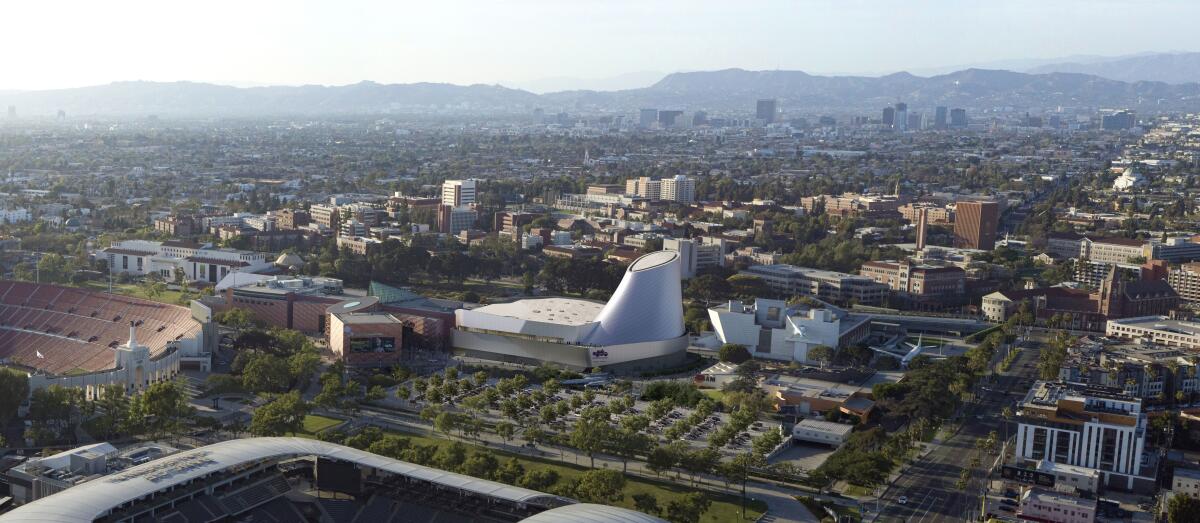
Weather permitting, before the end of the month, Endeavour will undertake its own lift into place. Hopefully, that lift will also be a one-night operation.
Once Endeavour is in place, the rest of the museum will be built around it, followed by the time it will take to install exhibits. It could be a few years before the new museum is open to the public.
The shuttle project, estimated to cost $400 million, will reshape the skyline around the California Science Center, whose roots stem from 110 years ago as a site for exhibiting agricultural and industrial projects. The site became the California Museum of Science and Industry in 1951, and reopened as the California Science Center in 1998.
The new aerospace museum wing is named for Samuel Oschin, the late Los Angeles businessman and philanthropist, whose name is also on the Griffith Observatory planetarium and the Cedars-Sinai Medical Center cancer institute. Financial contributions that came from the Mr. and Mrs. Samuel Oschin Family Foundation have been transformational to building the new museum wing, which broke ground in mid-2022.
The space shuttle’s arrival in California was a homecoming for Endeavour, which rolled off Rockwell International’s production line in Palmdale in 1991, replacing Challenger, which exploded shortly after launch in 1986, killing the seven aboard. Southern California played a crucial role in the shuttles’ development, which pumped hundreds of millions of dollars into the economy and became a source of pride for the region’s aerospace industry.
Endeavour flew 25 missions in space before its final flight in 2011, eight years after another shuttle, Columbia, disintegrated on reentry in 2003, and the shuttle fleet was set for retirement.
Among Endeavour’s most notable missions was successfully repairing the Hubble Space Telescope and helping complete construction of the International Space Station.
More to Read
Sign up for Essential California
The most important California stories and recommendations in your inbox every morning.
You may occasionally receive promotional content from the Los Angeles Times.
